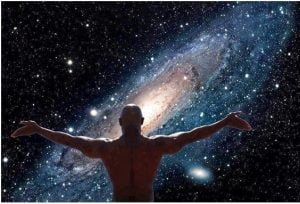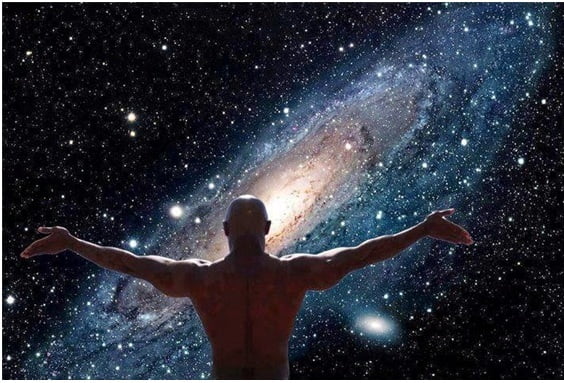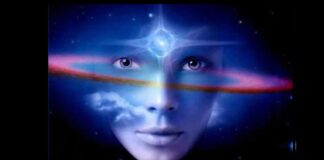
The following is excerpted from The Immortal Mind: Science and the Continuity of Consciousness Beyond the Brain by Ervin Laszlo with Anthony Peake, published by Inner Traditions, Bear and Company.
Your consciousness is not your consciousness. It is the manifestation of the longing of the cosmos for itself. It comes to you through you but not from you.*
*A paraphrase of Khalil Gibran’s words about children in The Prophet:
Your children are not your children. They are the sons and daughters of Life’s longing for itself. They come through you but not from you.
The beyond-the-brain consciousness — the consciousness we encountered in our review of near-death experiences, after-death communication, medium-conveyed and instrumental transcommunication, past-life recollections, and in experiences suggestive of reincarnation — is not a material entity in the manifest world.
It is an intrinsic element in the Akasha, the deep dimension of the cosmos.
The idea that consciousness belongs to a deeper dimension of reality is a perennial intuition. The great spiritual masters, poets, and even scientists have been telling us that consciousness is not “in” the brain and is not part of the world in which the brain exists.
It is part of the mind or intelligence that infuses the cosmos. Consciousness appears in space and time as a localized (yet nonlocal) manifestation. Erwin Schrödinger said it clearly: consciousness is one — it does not exist in the plural.
Just as particles and systems of particles in spacetime are projections of codes and relations in the Akashic deep dimension, so the consciousness associated with living organisms is a manifestation — a holographic projection — of the unitary consciousness that does not merely exist in, but actually is, that dimension.
The Akashic Concept of Consciousness
If consciousness is a holographic manifestation of the unitary consciousness of the cosmos, it is present throughout space and time. Consciousness is present in the mineral kingdom, in the living world, and in the social and ecological systems constituted by human beings and other organisms.

It is present at the level of quanta on the one end of the spectrum of size and complexity in nature, and on the level of galaxies on the other end.
But consciousness and the systems and organisms with which it is associated exist on different planes of reality. Particles and the entities composed of particles are part of the manifest world, whereas the consciousness that may be associated with them is an element in the deep dimension.
This insight explains otherwise unresolved puzzles. Among other things, it overcomes the problem of the “hard question” in consciousness research: how something material, such as the brain, can produce something immaterial, such as consciousness.
This puzzle does not need to be solved because it rests on false premises. There is no need to account for how the brain produces consciousness because brain and consciousness are on separate planes of reality. The brain does not produce consciousness; it transmits and displays it.
Let us consider this proposition. The standard argument for the claim that the brain produces consciousness is the observation that when the brain is inoperative, consciousness ceases.
There are several things wrong with this argument. In the first place, it is not true that consciousness always and necessarily ceases when the brain is not functioning. As we have seen in our review of the NDE, clinical studies show that people whose brain is clinically dead can have conscious experience, and sometimes this experience proves to be a veridical perception of the world.
Second, even if consciousness would cease when the brain is inoperative, this would not prove that consciousness is produced by the brain. When we shut down our computer, cell phone, TV, or radio, the information it displays disappears, yet the information itself does not cease to exist.
Just as the information displayed by electronic instruments exists independently of these instruments, so the consciousness displayed by the brain exists independently of the brain that transmits it. Consciousness exists in the cosmos whether or not it is transmitted by a living brain.
Experiential Foundations
The claim that consciousness is an intrinsic element of the cosmic deep dimension has foundations in our own experience. We access consciousness in a fundamentally different way from the way we access things in the world. To begin with, consciousness is private: only “I” can experience it.
But unlike other things, I do not observe my consciousness, I experience it. The difference is not negligible. Observation is a third-person act: the observer is separate from the person, thing, or event that he or she observes.
The brain, unlike the consciousness that is associated with it, can be observed in this mode. In observing the brain we see gray matter made up of myriad networks of neurons and subneuronal assemblies. But we do not and cannot observe the consciousness associated with them.
There is further support for the claim that consciousness is not part of the manifest spacetime world. It is the evidence — presented and discussed in Part 1 — that consciousness exists not only in association with the brain but can persist beyond it.
If consciousness were produced by the brain it would cease when the brain ceased to function. We have seen, however, that in some notable cases consciousness continues to exist beyond a functioning brain.
This is not an anomaly. Consciousness is not part of the brain and is not produced by the brain. It is merely transmitted and displayed by the brain, and it exists whether or not it is transmitted and displayed by the brain.
The Principal Propositions of the Akashic Concept of Consciousness
Consciousness is Transmitted and Displayed by the Brain
If consciousness is not in, and is not a part of, the manifest world, then consciousness is either in a transcendent spiritual realm described in the Abrahamic religions or is part of a non-manifest dimension of the cosmos.
The Akashic concept is that consciousness is part of the cosmos, even a fundamental part. But it is not the observable spacetime part.
In contemplating this proposition let us return to the analogy of information transmitted by a radio or another instrument. We know that a radio reproduces the sounds of the symphony rather than producing that symphony.
The symphony exists independently of its reproduction and continues to exist when the radio is turned off. Of course, when the radio is turned off we no longer hear the sounds of the symphony. But this does not mean that the symphony would cease to exist.
The Deep Dimension is a Cosmic Consciousness
As suggested above, the deep dimension of the cosmos is a consciousness. It receives information from the manifest dimension, and it “in-forms” the manifest dimension.

In the perspective of the manifest world the deep dimension is an information field or medium; it “in-forms” things in the world. But “in itself,” this dimension is more than a network of in-forming signals. It is a consciousness in its own right.
This tenet is supported by the experience of our own consciousness. We noted that we do not observe our consciousness — we experience it. We also do not observe the Akasha (it is a “hidden” dimension), but we experience it: more precisely, we experience its effect on things we can experience: things in the manifest dimension.
Let us suppose, then, that we could experience not only the manifest spacetime world but also the deep dimension itself. That would presuppose that we are a divine or supernatural being, co-extensive with the cosmos.
If we were the cosmos, we could introspect on its deep dimension. Our introspection would very likely reveal what introspection reveals in regard to our own experience: not sets and flows of signals, but the qualitative flow we know as our consciousness. Our cosmic-level introspection would reveal a cosmic consciousness.
Cosmic Consciousness In-forms the Manifest World
Just how does consciousness in the deep dimension in-form things in the manifest world? This is a difficult question, as it concerns the physical effect of a non-physical agency. It is elucidated, however, by recent explorations at the frontier where quantum physics encounters neuroscience.
The basic concept is the work of physicist Roger Penrose and neuroscientist Stuart Hameroff. They claim that their theory explains how a basically immaterial consciousness can enter into and in-form the material (or quasi-material) world.
- 1. The relevant concept is Penrose’s “Orchestrated Objective Reduction” (Orch OR). This concept extends Einstein’s general relativity to the Planck scale, the basic level of spacetime.According to Penrose, a particle in one state or location is a specific curvature in spacetime geometry, and the same particle in another location is a curvature in the opposite direction.The superposition of the curvatures in both locations make for simultaneous curvatures in opposite directions, and these constitute bubbles or blisters in the fabric of spacetime.
2.- These bubbles or blisters are the quanta that populate the physical world. They are entangled and nonlocal, but they are unstable: they collapse on interaction into the fine-structure spacetime, assuming one particular state at one particular place and time.
Penrose suggests that each quantum collapse introduces an element of consciousness into spacetime. If this is the case, we would have a physics-based explanation of how consciousness in the deep dimension enters the manifest world.
We have said that every quantum, every atom, and every multiatomic structure, including our own brain and body, are “in-formed” by the deep dimension. This “in-formation” occurs due to the sensitivity of the subneuronal structures of our brain to quantum-level fluctuations.
They are responsive to the orchestrated objective reduction through which consciousness enters the manifest world at the level of the fine structure of spacetime.
Theories accounting for the presence of consciousness in the world will no doubt be further developed in coming years. But it is not likely that their further development would change the basic insight: that consciousness is not produced by the brain. Consciousness is a cosmic phenomenon merely transmitted and elaborated by the brain.
Consciousness is a cosmic dimension, and the brain is a local entity. The consciousness associated with the brain is a localized manifestation of the Akasha, the deep dimension of the cosmos.
By Ervin Laszlo, Reality Sandwich; | Buy “The Immortal Mind: Science and the Continuity of Consciousness Beyond the Brain” here.
Disclaimer: We at Prepare for Change (PFC) bring you information that is not offered by the mainstream news, and therefore may seem controversial. The opinions, views, statements, and/or information we present are not necessarily promoted, endorsed, espoused, or agreed to by Prepare for Change, its leadership Council, members, those who work with PFC, or those who read its content. However, they are hopefully provocative. Please use discernment! Use logical thinking, your own intuition and your own connection with Source, Spirit and Natural Laws to help you determine what is true and what is not. By sharing information and seeding dialogue, it is our goal to raise consciousness and awareness of higher truths to free us from enslavement of the matrix in this material realm.
 EN
EN FR
FR



























While my knowledge of quantum physics and neuroscience can be described as rudimentary at best, this theory makes a great deal of intuitive sense. I have felt for a very long time that the brain’s functionality is much like that of a radio, in that it receives signals from some external source, and the range of signals that it processes are, just like a radio, dependent on the frequency to which it is attuned.